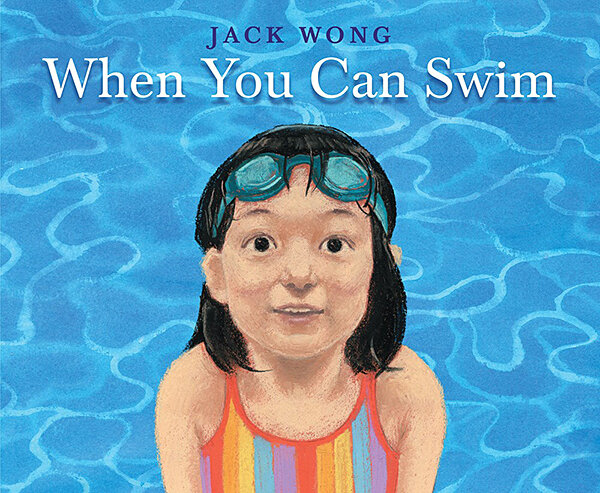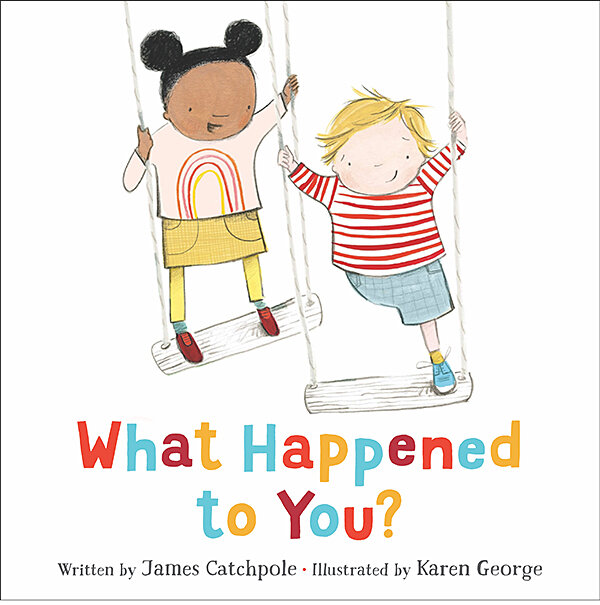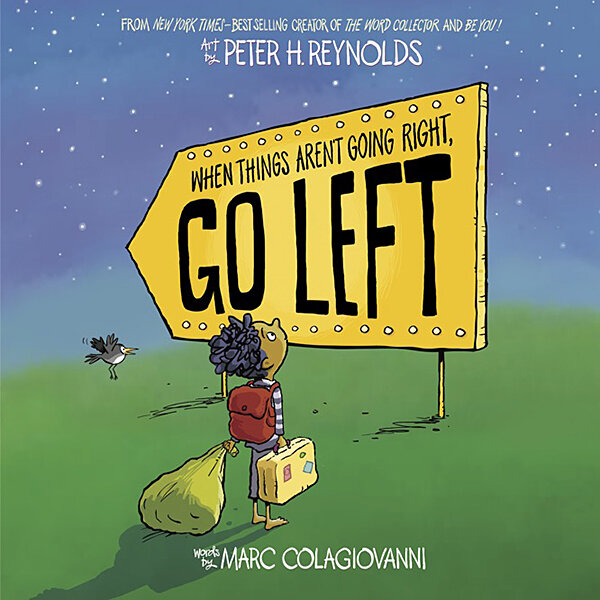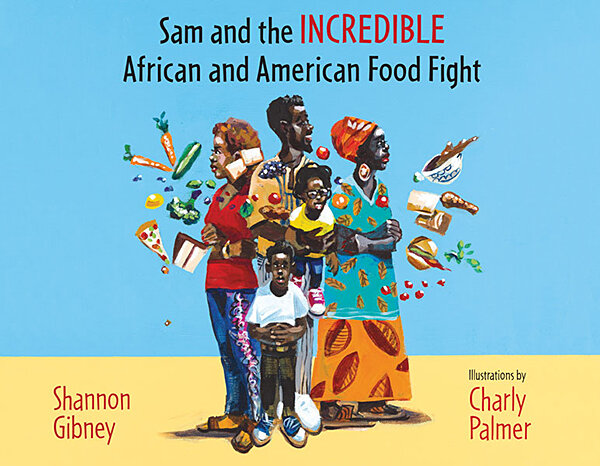Summer picture books: Parent-picked, kid-approved
Loading...
With the kids home from school for the summer, these picture books are perfect for breaking up long days in the sun with some relaxing – and educational – family time. Here’s a taste of some of our favorites for an afternoon read.
“When You Can Swim,” written and illustrated by Jack Wong, transports young readers to a series of underwater worlds where adventures await. “When you can swim,” Wong writes, “you’ll conquer any fear.”
Why We Wrote This
A story focused onNeed something to do in the heat? Amid long summer breaks, reading gives families time to connect and keeps kids on track for school.
Growing up as an immigrant in Canada, Wong was never comfortable in the neighborhood pool. But when he learned to swim, the skill opened the door to the freedoms he explores in the book.
In “What Happened to You?” written by James Catchpole and illustrated by Karen George, little Joe is playing at the local playground when a group of children asks him why he has only one leg. The kids soon realize that they don’t need to know what happened to him to include Joe in their games.
Inspired by Catchpole’s experience growing up with a disability, the book tackles a serious subject with levity, heart, and understanding. The lighthearted story teaches children (and adults) how to be around people with disabilities and to look past outward appearances to what really matters.
When the long, lazy days of summer beckon, head to your local library for a pile of stories to plunge into with your little ones. These five will inspire, enlighten, entrance, and delight children and their grown-ups, preferably with a popsicle in hand and soft green grass underfoot.
Conquering fears
Deeply poetic and lyrical, “When You Can Swim” by Jack Wong is a meditative book that transports readers to a series of underwater worlds, a raft of adventures awaiting – when you can swim.
Why We Wrote This
A story focused onNeed something to do in the heat? Amid long summer breaks, reading gives families time to connect and keeps kids on track for school.
The prose is pure poetry, as are Wong’s soft, painterly illustrations of swirling eddies, melding colors, and dappled light. Wong created both by visiting his favorite swimming holes again and again, making sketches and taking notes and pictures. The result is a sensory treat.
“When you can swim, you’ll conquer any fear of tannin-soaked lakes pitch-dark from tree bark like oversteeped tea because that darkness will turn glittering gold when you gather it by the handful,” he writes.
The backstory here provides even more depth: Growing up as an immigrant in Canada, Wong was never comfortable in the neighborhood pool. His mother, afraid that he would drown, forbade him from swimming, which only compounded his anxieties. Later, when Wong took the plunge and learned to swim, the skill empowered him and opened the door to the freedoms and adventures he unveils in this gorgeous book.
I hope that when my kids read this immersive story, they appreciate being able to swim and value the buoyant freedom swimming offers. That’s something their parents never learned as children.
Treating others with kindness
Little Joe, the protagonist of “What Happened to You?” written by James Catchpole and illustrated by Karen George, is busy playing pirate at the local playground. A stream of kids begins asking him why he only has one leg. “Did it fall off?” asks one. “Was it a burglar?” “Was it a lion?” “Was it a thousand lions?” ask three more. When Joe moves away from them, upset, the kids realize they don’t need to know what happened to play together and have a jolly good time.
Inspired by author Catchpole’s own experience growing up with a disability, the book deftly tackles a serious subject with levity, heart, and understanding. The lighthearted story teaches children (and adults) how to be around people with disabilities and to look past outward appearances to what really matters.
Navigating setbacks
If only Alexander, of the 1972 classic “Alexander and the Terrible, Horrible, No Good, Very Bad Day,” had had Marc Colagiovanni’s latest book in his back pocket, things might have gone better for him. Colagiovanni’s “When Things Aren’t Going Right, Go Left” contains clever wordplay and whimsical illustrations by award-winning artist Peter H. Reynolds. The book teaches young ones how to navigate frustration and disappointment by managing fears, doubts, and worries, which are illustrated as concrete objects that the main character learns to shed. My 9-year-old noted that “when he left his worries, things were lighter on him,” literally.
In the story, the protagonist also confronts failure, falling flat on his back after diving into a pool – and gets back up and tries again. It’s a simple but powerful message for young readers.
My 7-year-old proclaimed this one of his favorite books because “it shows how worries, frustrations, and doubts look, and they look funny, not scary.” For him, seeing the emotions depicted disarmed them and made them manageable.
Direct and witty, this book is like the older sibling who knows how to give great advice: uplifting without feeling saccharine, helpful without being didactic.
Bridging cultures
Liberian torbogee soup versus homemade sausage pizza. Okra soup and rice versus spaghetti and meatballs. In “Sam and the Incredible African and American Food Fight” by Shannon Gibney, a nightly food feud is proxy for a culture war in Sam’s home, with his American mother in one corner of the kitchen, and his Liberian aunt and dad in the other, cooking double dinners every night. Trapped in the middle are Sam and his little sister, Connah, “who were half and half, stuck in-between.”
Breathtakingly bold and vibrant illustrations by award-winning fine artist Charly Palmer explode from each page, a visual feast of sorts that delighted and transfixed my kids – and had them requesting tasty new meals.
When the food-fight-meets-culture-contest reaches an impasse – Sam’s “tummy had only so much space, and both meals wouldn’t fit” – he finds a simple way to bridge the gap and bring his family together around the meal. A sweet and gentle lesson on reaching across differences and finding common ground, this book will leave you and your little ones smiling – and ravenous. (Thankfully, Gibney offers two recipes to start your own food adventure.)
Ripple effect
You can’t help but smile as you read “A Good Deed Can Grow” by Jennifer Chambliss Bertman, which practically pulsates with positivity and kindness. The endearing book beautifully illustrates – literally, with cheer-inducing pictures by Holly Hatam – the ripple effects of a single act of kindness, from picking up litter and sharing lemonade, to reading books to older adults at a senior citizens center and visiting a sick friend.
The book’s message is especially relevant in light of new research that shows kids and adults underestimate how seemingly small acts of kindness can have an outsize impact on receivers.
In other words, your smile really can change someone’s day.
If it all feels too hunky-dory, the book stays grounded with these lines on how to deal with problems, wise advice for kids and their grown-ups alike: “Sometimes we might feel too small to help a problem that seems so big. When that happens, remember all the goodness and all the kindness that exist in our world began somewhere, sometime ago ... as a seed, a ripple, a sunbeam, a smile.”
In this colorful world, no kind act is too small.













